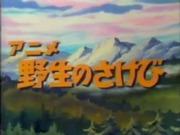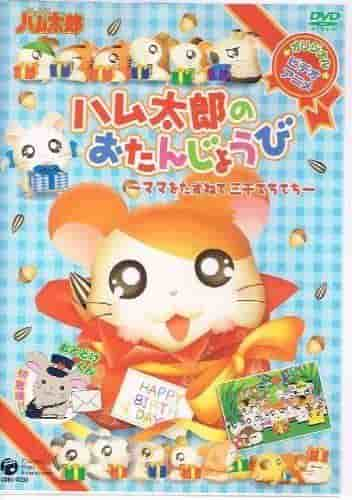Appeal and evaluation of the anime "Cry of the Wild"

The animated film "Cry of the Wild": a moving story about the preciousness of nature and lifeOverview"Cry of the Wild" is a TV anime series that aired from 1982 to 1984, and is based on an animal novel by Muku Hatoju, a writer active in the postwar literary world. This anime is known for depicting the importance of life through the interactions between humans and animals living in the wild. The series consists of 26 episodes, with 22 episodes aired in 1982, and the remaining 4 in 1984. ■Broadcast information"Wild Call" was broadcast on Tokyo 12 Channel (now TV Tokyo). The broadcast period is as follows:
■ StoryEach episode of "Cry of the Wild" is self-contained and depicts the harshness and meaning of life through the animals living in the great outdoors. The story conveys the preciousness of life and the beauty of nature through the way animals live and their relationships with humans. For example, the first episode, "Taro the Bear of the Mountains," depicts Taro the Bear surviving in the wild, while the 22nd episode, "Hoshitaro the Baby Deer," depicts the growth of a baby deer and the kindness of humans. ■Explanation"Cry of the Wild" is based on Muku Hatoju's animal literature, and its realistic portrayal of nature and animal ecology has deeply moved viewers. By depicting the world from the perspective of animals, the anime conveys the importance of humans coexisting with nature. Furthermore, after the 22 episodes were broadcast in 1982, the remaining four episodes were aired as a filler program about two years later. These four episodes were aired in response to viewer requests, completing the entire series. ■CastNarration was done by Teizo Muta, whose deep voice makes the animal stories even more moving. ■ Main staffMany staff members were involved in the production of "Cry of the Wild." Below is a list of the main staff members.
■SubtitleThe subtitles for each episode of "Cry of the Wild" are as follows:
■ Theme songs and musicThe opening and ending themes for "Scream of the Wild" are as follows:
■ Evaluation and impressions"Cry of the Wild" is a work that deeply moves viewers by realistically depicting nature and the ecology of animals. In particular, by depicting the world from the perspective of animals, it conveys the importance of humans coexisting with nature. In addition, by faithfully adapting Muku Hatoju's original work into an anime, the emotions and messages contained in the original work are conveyed to viewers. This anime is loved by a wide range of people, from children to adults, and is highly regarded as a work that makes viewers realize the preciousness of nature and life. In particular, the story, which depicts the lives of animals and their relationships with humans, deeply moves viewers and makes them think again about the importance of coexisting with nature. ■ Recommendation points"Cry of the Wild" is a work that deeply moves viewers by realistically depicting nature and the ecology of animals. In particular, by depicting the world from the perspective of animals, it conveys the importance of humans coexisting with nature. In addition, by faithfully adapting Muku Hatoju's original work into an anime, the emotions and messages contained in the original work are conveyed to viewers. This anime is loved by a wide range of people, from children to adults, and is highly regarded as a work that makes viewers realize the preciousness of nature and life. In particular, the story, which depicts the lives of animals and their relationships with humans, deeply moves viewers and makes them think again about the importance of coexisting with nature. ■ Related worksLike "Cry of the Wild," other anime works that have nature and animal themes include the following:
■How to watch"Cry of the Wild" is now available on DVD and Blu-ray. Some episodes are also available on video streaming services. You can watch them on the following sites:
■ Summary"Cry of the Wild" is a work that deeply moves viewers by realistically depicting nature and the ecology of animals. In particular, by depicting the world from the perspective of animals, it conveys the importance of humans coexisting with nature. Furthermore, by faithfully adapting Muku Hatoju's original work into animation, the emotions and message of the original work are conveyed to viewers. This anime is loved by a wide range of people, from children to adults, and is highly acclaimed as a work that makes viewers reaffirm the preciousness of nature and life. In particular, the story, which is told through the way animals live and their relationships with humans, deeply moves viewers and makes them think again about the importance of coexisting with nature. Please give it a watch. |
<<: The appeal and evaluation of "The Story of White Fang": A story of wild adventure and growth
>>: Poppen Sensei and the Swamp of No Return: A review of the fascinating characters and deep story
Recommend
Dragon Ball: The Great Adventure of Magical Wonders!! - The ultimate adventure and moving review
The appeal and reviews of "DRAGON BALL: The ...
The appeal and evaluation of "Sea Urchin and Sea Cucumber": A unique world view and a deep look into the characters
"Sea Urchin and Sea Cucumber": The appe...
The appeal and reviews of "Yojuu Kyoushitsu Gaiden: The Movie": Why is it a must-see?
"Yokai Beast Classroom Gaiden: The Movie&quo...
"Denkigai no Honya-san" review: A fascinating story and deep characters
"Denkigai no Honya-san": A story of boo...
The animation adapted from the novel "Reincarnation as the Seventh Prince" announced the production plan for the second season. The first season has been completed and released on Blu-ray
The online novel "Reincarnation as the Seven...
James Wan shared photos of the new film "Maleficent" and is about to wrap up
The famous director James Wan recently shared the...
The long post-production begins! Anno Hideaki plans to film "Shin Ultraman"
In August this year, Tsuburaya Productions issued...
The appeal and evaluation of the third short anime series "Golden Kamuy"
Golden Kamuy Golden Doga Gekijyo review and detai...
Dragon Ball: Ultimate Legendary Adventure and Combat Review
Dragon Ball: A legendary tale of adventure and fr...
Cameron criticizes Marvel and DC movies: characters lack maturity
Recently, director James Cameron talked about the...
Aimaimy SP The party was in full swing, but... Thoughts and reviews of the special edition
A comprehensive review and recommendation of &quo...
Sneak peek of the opening scene of the new animated film "Crayon Shin-chan"
The latest work in the series, the new "Cray...
The appeal and reviews of "Stella's Magic OVA": A must-see special edition for fans
The appeal and evaluation of the "Stella'...
"Wonder Woman 2" new stills show the true face of Leopard Barbara
Previously, Empire Magazine released a new still ...
Netflix's "Ghost in the Shell SAC 2045" Season 2 live footage will be released on May 23
The second season of Netflix's "Ghost in...









